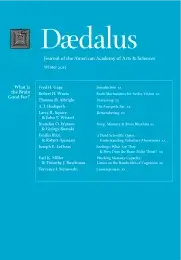Consciousness
No one did more to draw neuroscientists’ attention to the problem of consciousness in the twentieth century than Francis Crick, who may be better known as the co-discoverer (with James Watson) of the structure of DNA. Crick focused his research on visual awareness and based his analysis on the progress made over the last fifty years in uncovering the neural mechanisms underlying visual perception. Because much of what happens in our brains occurs below the level of consciousness and many of our intuitions about unconscious processing are misleading, consciousness remains an elusive problem. In the end, when all of the brain mechanisms that underlie consciousness have been identified, will we still be asking: “What is consciousness?” Or will the question shift, just as the question “What is life?” is no longer the same as it was before Francis Crick?
Francis Crick was once asked by his mother what scientific problems he wanted to pursue in life.1 The young Francis replied that there were only two problems that interested him: the mystery of life and the mystery of consciousness.2 Crick clearly had a keen sense for what is important, but may not have appreciated the difficulty of these problems. Little did his mother know that, in 1953, her son and James Watson would famously discover the structure of DNA, the loose thread that would eventually unravel one of life’s great mysteries. However, Crick was not content with this achievement.
The Salk Institute for Biological Studies was founded in La Jolla, California, in 1960 and Crick was one of the earliest non-resident fellows, a position that entailed an annual visit to help the faculty make important decisions on promotions and new research directions. In 1977, Crick permanently moved to the Salk Institute, partly to shift his research focus to neuroscience–which he believed would have been difficult to do at the Laboratory of Molecular Biology in Cambridge, England–and partly to circumvent the age limit that would have required him to retire from Cambridge University.3 At the Salk Institute, Crick took up his long-standing interest in consciousness and decided to focus on the question of visual awareness, since a great deal was already known about the visual parts of the brain and understanding the neural basis of perception would serve as a solid foundation for exploring the neural basis of other aspects of consciousness. . . .
Access the full volume here.
